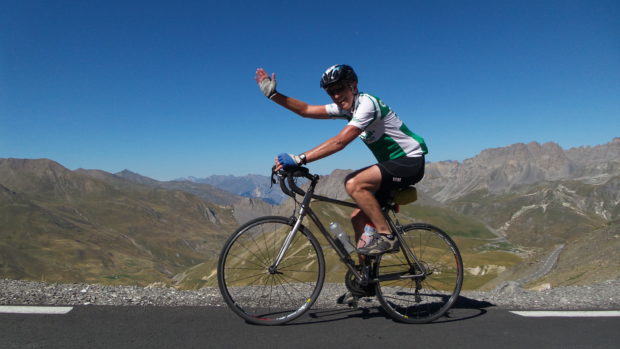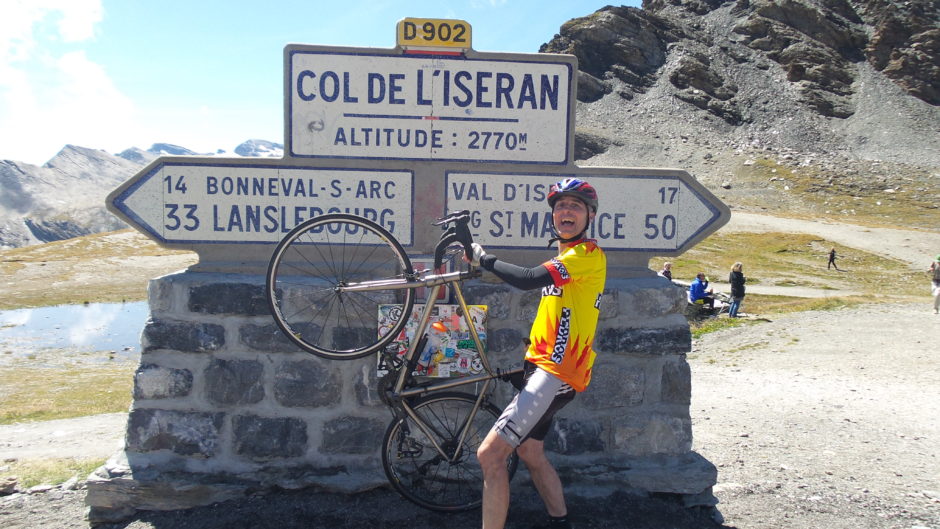Mountains have not always been a part of cycling. It was not until the introduction of the Col du Tourmalet in the Tour de France in 1910 that the public got a chance to witness the “baroudeurs” of the road scale these impossibly high mountain passes.
That year, Octave Lapize was the first rider over the top of the Col du Tourmalet – earlier that day he had also battled against the gradient on the Peyresourde, the Aspin, the Aubisque and the Osquich on a 326km long stage.
That loop of mountain passes came to be known as the Circle of Death. Lapize was not impressed with the organisers’ decision to include mountains into their race. As he cursed his way up to the summit of the Tourmalet he bawled at the race officials: “Vous êtes des assassins! Oui, des assassins” (You are murderers! Yes, murderers!).
You must remember that at that time many of the climbs were little more than unmade gravel cart tracks and the riders were pedalling on single gears. Lapize threatened to quit the event, but he regained some of his composure on the descent and went on to win the stage and eventually the overall race a few days later.
The riders may have hated the mountains, but the journalists covering the race were whipped up into a frenzied hyperbole. One wrote of the The Circle of Death in l’Auto as the place “Where hopes of Tour de France immortality go to die. Where wild bears roam the cols. Where men are broken, emotionally, physically, spiritually, totally.”
The fans lapped it up and the legends of the mountain “grimpeurs” was born and a spark lit in cyclists around the world.
Since then, despite the technological advances in cycling, a ride in the mountains is still a challenge, but riders still seek the longest and steepest gradients to push themselves to their limits.
The pain and suffering that every rider goes through to haul their body weight and bike up the climb, usually accompanied by curses and exclamations of “never again” is a strange addiction and one that is unfathomable to non-cyclists.
What could be so appealing about grinding your way up these behemoths of gradient? There isn’t a specific answer to that. I have guided riders to the summits of cols across Europe and each one has had a different response.
Some are in bits, covered in sweat and snot and hanging over their handlebars, others have wept with joy, with pain and some in memory of friends departed.
Others have been ecstatic and grinning from ear to ear. I have even had some nonplussed by the whole affair.
One rider, who had just climbed the 30km of the spectacular Col de Bavella on Corsica, told me: “That got a bit tedious.”
At the end of the trip I asked if they had taken any good photographs – they had and proceeded to show me a screen shot of their riding data from their Garmin cycling computer.
So the motivations for cycling in the mountains are varied and sometimes incomprehensible, even to other cyclists, but just visit Alpe du Huez during the summer months to witness the tens of thousands of cyclists crawling their way up the slopes.
There must be something in it; something more than what appears to be an inherently masochistic pursuit.
I’m not sure I can even explain my own enjoyment of climbing mountains by bike. What I do know is that I enjoy being in the mountains. I love the views, although sometimes the only view I have is that of sweat drops on my handlebars as I toil onwards and upwards.
I love the physical exertion – it is addictive.
But perhaps most of all, I love following in the pedal strokes of those, such as Octave Lapize, who pedalled their way through mountain passes and into the annals of cycling legend.
Where to Ride: Montrose Basin
OS Landranger 1:50000 Map 54
Start: Mains of Dun Car Park NO669591
Distance: 12m/ 20km
Details: An on-road route around the nature reserve of Montrose Basin, with great views of the basin as you ride and plenty of places to visit on the way including the Scottish Wildlife Visitor Centre and Bird Observation Point at Montrose Basin, and Mains of Dun Farm with its mill remains.
From Mains of Dun head south to join the A934, then A92 through Montrose before turning left onto the A935 to take you back to Mains of Dun.











